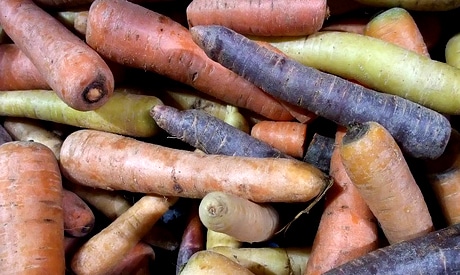
Do you know what is lurking in the food you have in your pantry? Most likely if you buy brand names like Nabisco, Healthy Choice, Pillsbury, Hershey’s, or even Ego Frozen Waffles (to name a few), you are ingesting pesticides, herbicides, and other genetically modified organisms (GMOs) that harm your body by loading them up with toxins that weaken your immune system and create havoc in your body.
It can be a real challenge to find safe foods that are free from GMOs, but it can be done, and your body will thank you for it in the long run. For me, in the past I was one of those people that liked to have different brands of fun, yummy foods; foods that were easy to make and that lasted a long time in my cabinet. During those years I was always getting colds and never had energy. Read more about the latest on the fight against GMOs
One day I got sick and tired of being sick and tired and decided to make a change. I went through my cabinets and dumped everything that came from a box or can and threw it away. I took the non-GMO pledge to never buy foods that will harm my body and instead will energize and keep it healthy for years to come.
Here are a few easy steps to keep a well-stocked GMO-free pantry, refrigerator, and freezer.
1. Buy Organic.
One of the easiest ways to become GMO-free is to look for foods that are labeled with "USDA Organic" or "100% Organic." Organic foods cannot contain GMOs.
2. Avoid foods with bar codes starting with an 8.
Always look at the barcodes on foods. If the five-digit code starts with an 8, it means it contains GMOs. However, if the five-digit code starts with a 9 then it’s an organic product.
3. Support your local farmers.
I always buy most of my produce from my local farmers at farmer’s markets. I find my produce to be the freshest, and it lasts longer in my refrigerator, AND I know where my food is coming from. I always talk to the farmers to find out how the produce I am getting was grown and if they used any type of pesticides.Read more about recipes from farmer's markets
4. Don’t buy seedless.
When buying fruits like watermelons and grapes most people like to buy the ones that are seedless. But if you think about it, when you buy fruits without the seeds, you are buying a fruit that has been modified. The seeds are meant to be present in that particular food.
5. Avoid products that are made from corn, soy, and cotton.
Corn, soy, and cotton are the top three GMO grown crops. Eighty-eight percent of corn, 93 percent of soy, and 94 percent of cotton is genetically modified. Read your labels because these crops are hiding in basic foods like margarine and some cooking oils.
In general, you should read your labels to make sure the ingredients are ones you can read and understand, and avoid anything that is artificial and that includes sweeteners too. Once you go GMO-free, you will start to notice a change in the way you feel, your immune system will start to get stronger, and you may even lose that extra weight.
For more on why reading labels is as important as ever, check out Andrea's video below:
Photo Credit: mermaid99




